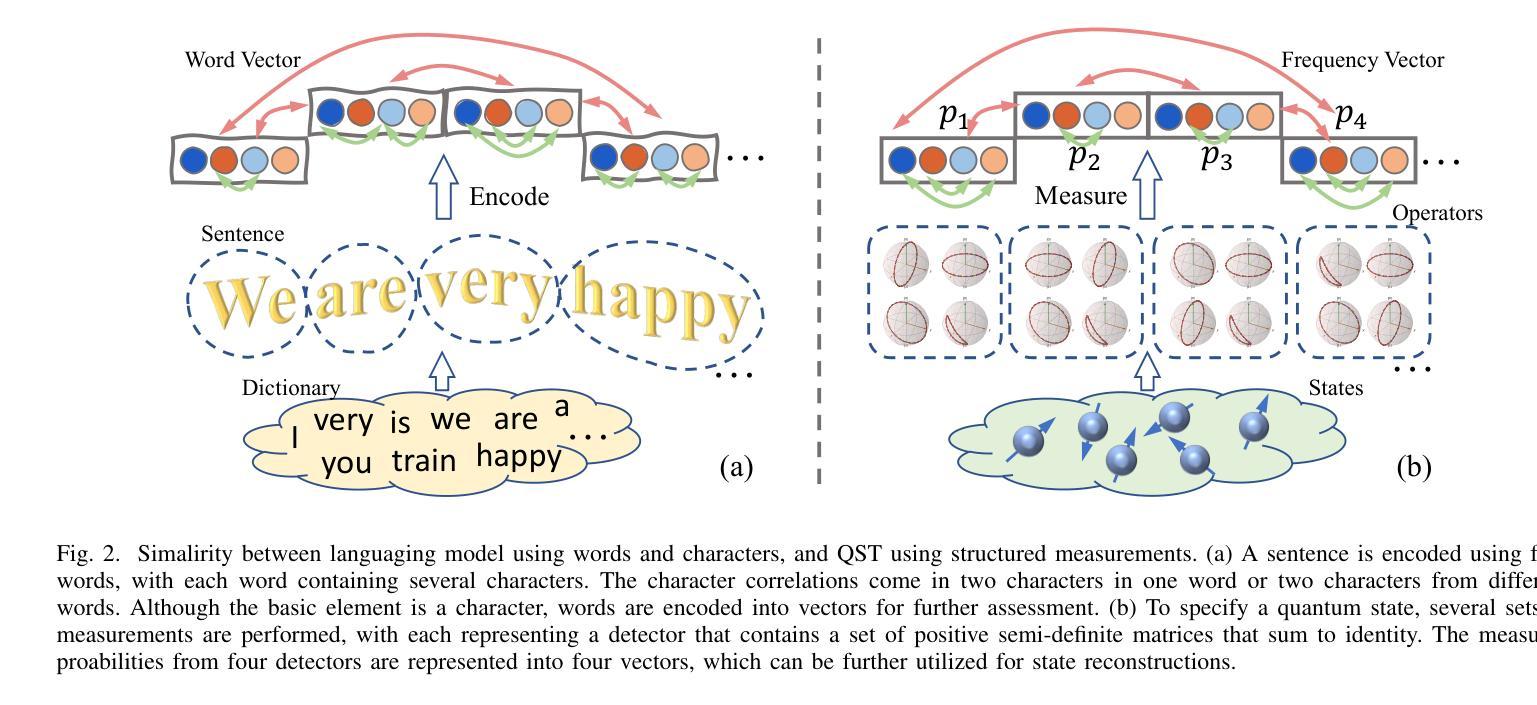⚠️ 以下所有内容总结都来自于 大语言模型的能力,如有错误,仅供参考,谨慎使用
🔴 请注意:千万不要用于严肃的学术场景,只能用于论文阅读前的初筛!
💗 如果您觉得我们的项目对您有帮助 ChatPaperFree ,还请您给我们一些鼓励!⭐️ HuggingFace免费体验
2025-04-06 更新
Tomography of Quantum States from Structured Measurements via quantum-aware transformer
Authors:Hailan Ma, Zhenhong Sun, Daoyi Dong, Chunlin Chen, Herschel Rabitz
Quantum state tomography (QST) is the process of reconstructing the state of a quantum system (mathematically described as a density matrix) through a series of different measurements, which can be solved by learning a parameterized function to translate experimentally measured statistics into physical density matrices. However, the specific structure of quantum measurements for characterizing a quantum state has been neglected in previous work. In this paper, we explore the similarity between highly structured sentences in natural language and intrinsically structured measurements in QST. To fully leverage the intrinsic quantum characteristics involved in QST, we design a quantum-aware transformer (QAT) model to capture the complex relationship between measured frequencies and density matrices. In particular, we query quantum operators in the architecture to facilitate informative representations of quantum data and integrate the Bures distance into the loss function to evaluate quantum state fidelity, thereby enabling the reconstruction of quantum states from measured data with high fidelity. Extensive simulations and experiments (on IBM quantum computers) demonstrate the superiority of the QAT in reconstructing quantum states with favorable robustness against experimental noise.
量子态层析(QST)是通过一系列不同的测量来重建量子系统状态(数学上描述为密度矩阵)的过程,这可以通过学习参数化函数来解决,将实验测量的统计数据转化为物理密度矩阵。然而,之前的工作忽略了表征量子态的量子测量的特定结构。在本文中,我们探索了自然语言中的高度结构化句子与QST中的固有结构化测量之间的相似性。为了充分利用QST中涉及的内在量子特征,我们设计了一个量子感知转换器(QAT)模型,以捕获测量频率和密度矩阵之间的复杂关系。特别是,我们在架构中查询量子算子以促进量子数据的信息化表示,并将Bures距离纳入损失函数中评估量子态保真度,从而能够以高保真度从测量数据中重建量子态。广泛的模拟和实验(在IBM量子计算机上)证明了QAT在重建量子态方面的优越性,并且对实验噪声具有良好的鲁棒性。
论文及项目相关链接
Summary
量子状态层析技术(QST)是通过一系列不同的测量来重建量子系统状态(数学上描述为密度矩阵)的过程。本文探索了自然语言中的高度结构化句子与QST中的内在结构化测量之间的相似性。为了充分利用QST中的内在量子特征,设计了一种量子感知转换器(QAT)模型,以捕获测量频率和密度矩阵之间的复杂关系。通过查询量子算子来构建量子数据的表示,将Bures距离融入损失函数以评估量子状态的保真度,从而能够以高保真度从测量数据中重建量子状态。广泛的模拟和实验表明,QAT在重建量子状态方面具有优越性,并且对实验噪声具有良好的鲁棒性。
Key Takeaways
- 量子状态层析技术(QST)是通过一系列测量重建量子系统状态的。
- QST中忽略了测量特定结构的问题。
- 自然语言中的高度结构化句子与QST中的结构化测量具有相似性。
- 提出了一种量子感知转换器(QAT)模型来捕获测量频率和密度矩阵之间的复杂关系。
- QAT模型利用量子算子构建量子数据表示,并集成Bures距离以评估量子状态保真度。
- QAT在重建量子状态方面具有优越性,并展现出对实验噪声的良好鲁棒性。
点此查看论文截图






